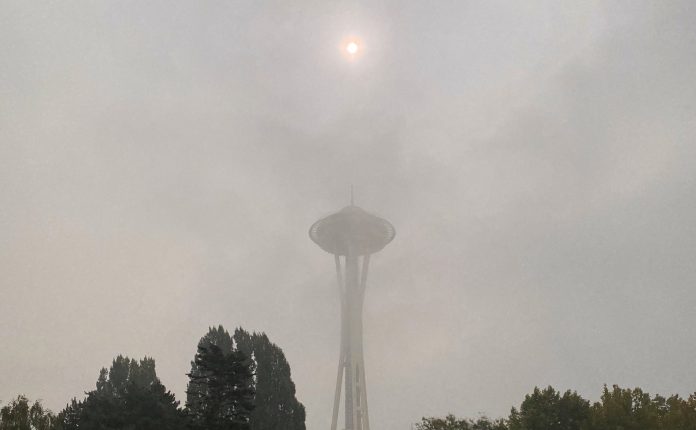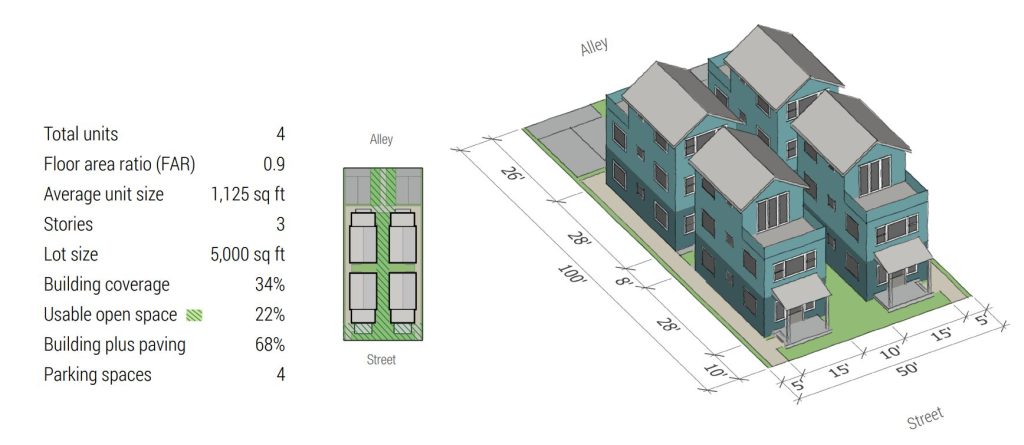
As drafted, the Seattle Comprehensive Plan would drop the ball on housing abundance, affordability, and climate.
Seattle Mayor Bruce Harrell campaigned on the issues of homelessness, affordable housing, and climate action. Since becoming mayor, he has often spoken of how central these issues are to the future of the city. He has repeatedly said that Seattle’s history of redlining personally impacted him.
When reading his One Seattle Comprehensive Plan, we were surprised to find that he failed to deliver solutions to those issues so close to his heart. The mayor did not pick the plan that maximizes housing affordability or abundance. Mayor Harrell’s comprehensive plan proposes to target only 20,000 more homes in the next 20 years above what would happen if Seattle made zero changes.
If Harrell had read the Draft Environmental Impact Statement, he would know it found that “Alternative 5 would result in the largest increase in housing supply and therefore have the greatest impact on reducing overall market housing cost pressures for both new and older units.” And further, he would have read that the production of affordable housing would be maximized in “Alternative 5 [which] would provide the greatest benefit for low-income renter households among all alternatives due to its impact on increasing rental housing supply and new affordable housing through MHA [Mandatory Housing Affordability] and MFTE [Multi-Family Tax Exemption].” [emphasis added]
The public repeatedly asked the city for bold solutions to bring a positive vision of housing abundance and address the lack of climate adaptation in our current development. They asked for more space for trees, environmentally sustainable buildings built to passive house standards, and car-light communities. Hundreds of comments from engaged residents called for an Alternative 6 that sought 200,000 homes in 20 years to begin to address our severe shortfall in housing while welcoming new neighbors.
But Mayor Harrell also appears to not have read the City’s summary of those comments.
Nearly every council candidate that attended the Complete Communities Coalition candidate forum (the coalition consisting of Habitat for Humanity, The Urbanist, House Our Neighbors, Real Change, The Chief Seattle Club, Housing Development Coalition, Urban League of Metropolitan Seattle, and Futurewise) likewise supported Alternative 5 or aspiring even higher to Alternative 6.
The Mayor also appears to have ignored evidence from Minneapolis, which expanded zoning for housing and demonstrated that for every 100 new market-rate apartments built, there were 70 new openings for renters in lower-income neighborhoods, countering the pressure of gentrification and economic displacement.
In short, with this comprehensive plan proposal we can stop pretending that this Mayor wants to concretely address the housing and climate crises. Mayor Harrell’s One Seattle Comprehensive Plan is the most shortsighted, visionless, and climate change-denying solution possible.
Where’s the social housing?
Last February, voters passed House Our Neighbors’ Initiative 135 (by a 14-point overwhelming majority) to create the City’s first social housing developer. Seattle now has a new model of housing underway to help alleviate our affordability crisis. House Our Neighbors (HON) is currently working to fund the social housing developer with a progressive revenue source as proposed in Initiative 137.
And yet, Mayor Harrell’s One Seattle Comprehensive Plan contains only one oblique mention of social housing. The Mayor’s Office of Planning and Community Development (OPCD) did not study the community’s request for an Alternative 6 to induce abundant social housing and setting up the city to better adapt to the increasingly adverse conditions we will see with climate change. In fact, there are no plans in Mayor Harrell’s comprehensive plan for social housing. It’s as if the City’s Social Housing Developer and the numerous citizens who supported a visionary and aspirational Alternative 6 don’t exist.
Furthermore, the One Seattle Plan does not grant social housing, which provides housing for working and low-income people, the same height bonuses as affordable housing for those making below 60% of area median income. It’s unlikely social housing can fill the void in homebuilder interest in building sixplexes and eightplexes given the way that the affordable bonuses are designed and the focus on homeownership.

People who can afford $750,000 townhomes might find something to like in the Mayor’s plan, but the working class folks who were hoping for a more affordable housing option will not, leaving rent-burdened educators, restaurant workers, janitors, and nurses out of luck and unlikely to gain access to Seattle’s most exclusionary residential neighborhoods.
As we said throughout Initiative 135, we need both social housing and nonprofit affordable housing to alleviate our affordability crisis. Social workforce housing alone cannot do it, and affordable housing alone cannot do it.
However, as we also said throughout the I-135 campaign, without opening up more of our city to multifamily housing, affordable and social housing can only do so much to alleviate the crisis. While Mayor Harrell tries to rebrand a doubling down on the city’s bifurcated and segregated “Urban Village” growth strategy, we know this is just window dressing. Mayor Harrell’s One Seattle Plan continues our practice of exclusionary zoning that focuses new housing to a few neighborhoods and along polluting arterials. This “modern redlining” will continue to fuel displacement, widen the gap between the rich and poor, and further drive our middle class to the exurbs, forcing them to commute in, exacerbating our climate crisis and stealing time from friends and family.

For its talk of climate change and adaptation, the comprehensive plan is extremely ineffective in outcomes. The neutered approach that would not comply with the state’s missing middle housing mandate (approved with House Bill 1110 in 2023) would induce more detached houses on single-family lots resulting in reduced tree canopy — instead of small and compact missing middle housing with more space for trees and biodiversity.
The City’s draft Environmental Impact Statement (EIS) also didn’t study the climate vulnerability caused by continuing to limit dense and affordable housing to the most toxic streets in the city, where the urban heat island effect cannot be mitigated with our current development patterns, and where air and noise pollution are concentrated — the very topic of a book “Building for People: Designing Livable, Climate-Friendly, Affordable Neighborhoods” that Michael Eliason just completed.
Community engagement was ignored
The Mayor and his Office of Planning and Community Development are asking us for community input over the next 60 days. We already did that. We did engage! We turned out during the scoping process. We overwhelmingly supported Alternative 5 and Alternative 6. In fact, our Alternative 6 Plan for abundant social housing received the most upvotes.
But what did we get for this civic participation? A plan that will fuel the racist impacts of economic displacement and continue to funnel most development into the Central District and South Seattle. If Mayor Harrell was really interested in reducing development pressure and displacement in these communities, only Alternative 5 would achieve this, as noted in the EIS: “Most housing growth would be in Northwest & Northeast Seattle (Areas 1 and 2) followed by Downtown/South Lake Union (Area 4).”

Mayor Bruce Harrell has failed Seattle. This is not “Space Needle Thinking” — it’s “sewing needle thinking.” Mayor Harrell is attempting to thread the bare minimum of housing to comply with the Growth Management Act — while leaving most of Seattle’s land off-limits to new housing, and continuing to funnel new homes into ever narrowing swaths of Seattle’s Urban Villages that were built on decades of redlining, downzones, and exclusionary zoning.
Under Mayor Harrell’s plan, Seattle will continue to see rents rise, housing costs increase, and the tree canopy diminished. A bifurcated Seattle, unprepared to adapt to drastically changing climate, and increasingly for the wealthy. This isn’t a One Seattle Plan — it’s a One Percent Plan.
The city — from the public who engaged extensively on this issue, the voters that have repeatedly clamored for a more climate-forward vision of the city, to addressing our massive and growing housing shortage and homelessness crises, and most importantly to our kids and future residents of this amazing city — needs actual leadership. We don’t need slogans. We cannot afford to punt this down the road another decade or longer. Let’s get to work.
Please comment on the City’s engagement hub, email your council member, show up to the City’s public hearings (again) and let the Mayor know how egregious this plan is, and that the city needs to read the EIS, and actually put forth a plan for a climate-forward, welcoming, and more affordable future.



